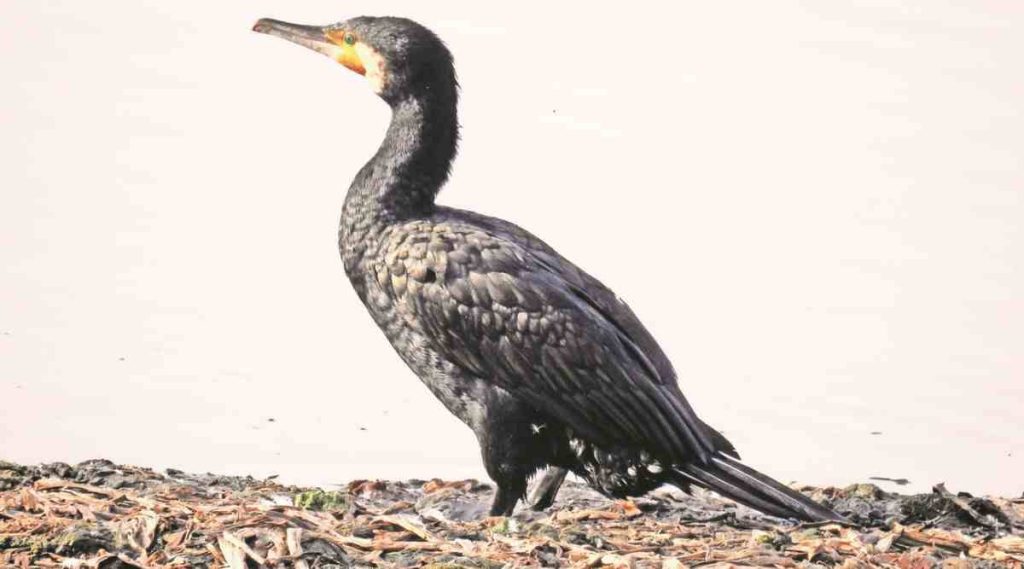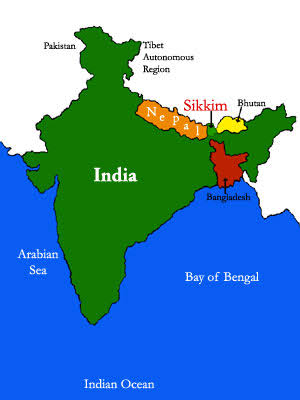Contents:
- Asian Water bird Census: Dip in water bird species
- The status of the Nuclear Non-Proliferation Treaty
- New bridge to connect India and Nepal
Asian Waterbird Census: Dip in waterbird species
Context:
Asian Waterbird Census conducted at Delhi’s Sanjay Lake recorded only 13 species, down from 17 species recorded from 2019 to 2021. Of these, 11 are resident water birds, while only two are winter migratory species.
Relevance:
GS Paper – 3: Conservation
Dimensions of the Article:
- About Asian Waterbird Census (AWC)
- Key findings of the report
- Wetlands and Waterbirds:
About Asian Waterbird Census (AWC):
- It is an international programme that focuses on monitoring the status of waterbirds and wetlands.
- Every January, thousands of volunteers across Asia and Australasia visit wetlands in their country and count waterbirds. This citizen science programme is the Asian Waterbird Census (AWC).
- It is an integral part of the global waterbird monitoring programme, the International Waterbird Census (IWC), coordinated by Wetlands International.
- It runs in parallel with other regional programmes of the International Waterbird Census in Africa, Europe, West Asia, the Neotropics and the Caribbean.
- Scope: The AWC was initiated in 1987 in the Indian subcontinent and since has grown rapidly to cover major region of Asia, from Afghanistan eastwards to Japan, Southeast Asia and Australasia.
- The census, thus covers the entire East Asian – Australasian Flyway and a large part of the Central Asian Flyway.
- Till date, more than 6,100 sites of 27 countries have been covered with active participation of thousands of volunteers.
- Significance:
- The information so generated is used to identify wetlands of high importance for waterbirds, and take conservation measures such as designation as Ramsar Sites and Flyway Network Sites, or inclusion as priority wetlands within national programmes.
- It also helps in implementation of the Convention on Migratory Species (CMS) and the Convention on Biological Diversity‘s (CBD).
- The AWC is jointly coordinated by the Bombay Natural History Society (BNHS) and Wetlands International.

Key findings of the report:
- AWC, an annual count of waterbirds which is under way in parts of Delhi-NCR, has found lower waterbird species diversity at East Delhi’s Sanjay Lake when compared to the count from the past three years.
- The census recorded only 13 species, down from 17 species recorded from 2019 to 2021. Of these, 11 are resident water birds, while only two are winter migratory species.
- The number of birds has increased from 90 in 2021 to 132 this year. It, however, is smaller than the 190 birds counted in 2019, and the higher figure of 347 birds in 2020.
- The census also found that only the number of Indian Cormorants has increased from 11 last year to 62 this year.
- Migratory species recorded at Sanjay Lake:
- The two migratory species recorded on Thursday were the Great Cormorant, which migrates from Southeast Asia, and the Eurasian Coot, which migrates from Temperate Asia.
- The resident species found at the lake include the Common Moorhen, the Indian Cormorant, the White-throated Kingfisher, the White-breasted Waterhen, the Little Grebe, and the Red-wattled Lapwing.
Wetlands and Waterbirds:
- Waterbirds are one of the key indicators of wetlands health.
- Wetlands provide feeding, resting, roosting and foraging habitats for these charismatic species.
- The lower species diversity is a sign of degradation of the lake, since waterbirds are an indicator of its health
- Threat to wetlands:
- The issue of water availability, since there is no sustained supply of good quality water.
- Sewage discharged that finds its way into the lake
- Human disturbance caused by activities like boating, have ruined the habitat.
-Source: The Hindu, Indian Express
The status of the Nuclear Non-Proliferation Treaty
Context:
The five global nuclear powers, China, Russia, U.S., U.K., and France, pledged to prevent atomic weapons from spreading and avoid nuclear conflict.
The joint statement was issued after the latest review of the Nuclear Non- Proliferation Treaty (NPT), which first came into force in 1970, was postponed from its scheduled date of January 4 to later in the year due to the COVID19 pandemic
Relevance:
GS Paper – 2: Effect of Policies & Politics of Countries on India’s Interests
Dimensions of the Article:
- About Nuclear Non-Proliferation Treaty
- Signatories to Non-Proliferation treaty
- Why did India not sign the NPT?
- Current situation
About Nuclear Non-Proliferation Treaty:
- It is an international treaty with an objective to limit the escalation of a nuclear arms race and the technology related to it.
- Further goals of the treaty also included promoting cooperation in the peaceful use of nuclear energy and achieving complete nuclear disarmament.
- The Treaty represents the only binding commitment in a multilateral treaty to the goal of disarmament by the nuclear-weapon States.
- Opened for signature in 1968, the Treaty entered into force in 1970. On 11 May 1995, the Treaty was extended indefinitely.
- A total of 191 States have joined the Treaty, including the five nuclear-weapon States.
- Three pillars of the treaty:
- Non-Proliferation
- Disarmament
- Peaceful use of Nuclear Energy
- Need for NPT:
- Nuclear competition among major powers could encourage states without nuclear weapons to acquire their own.
- An ideal way to solve this would be for all nuclear states to abandon their nuclear stockpile or to go for nuclear deterrence among large powers and provide a nuclear umbrella to nonnuclear states
- Safeguards system:
- To further the goal of non-proliferation and as a confidence-building measure between States parties, the Treaty establishes a safeguards system under the responsibility of the International Atomic Energy Agency (IAEA).
- Safeguards are used to verify compliance with the Treaty through inspections conducted by the IAEA.
- The Treaty promotes cooperation in the field of peaceful nuclear technology and equal access to this technology for all States parties, while safeguards prevent the diversion of fissile material for weapons use.
- Major Issues with Non-Proliferation Treaty:
- The main drawbacks of the treaty are that it never held accountable the 5 nations who possessed nuclear weapons at the time when the treaty was signed.
- It was criticised the treaty to be discriminatory as it focuses on preventing only horizontal proliferation while there is no limit for vertical proliferation.
Signatories to Non-Proliferation treaty
- It was opened for signature in 1968 and the Treaty entered into force in 1970.
- The Non-Proliferation Treaty has 187 nations who are a party to it – more than any other arms limitation treaty.
- There are a total of nine nations that possess nuclear weapons.
- Five of the nations namely – US, UK, France, Russia and China have signed the treaty. The remaining four nations namely – India, Pakistan, Israel and North Korea have not signed the treaty and thus not a party to the treaty.
- India and Pakistan are known to possess nuclear weaponry, while Israel is strongly suspected of possessing it. North Korea has a nuclear weapons programme but its actual possession of nuclear weapons is debated
Why did India not sign the NPT?
- India is one of the only five countries that either did not sign the NPT or signed but withdrew, thus becoming part of a list that includes Pakistan, Israel, North Korea, and South Sudan.
- India’s nuclear weapons program is described by its government as a necessary minimum deterrent in the face of regional nuclear threats that include a considerably larger Chinese nuclear arsenal as well as Pakistan’s nuclear arms.
- India always considered the NPT as discriminatory and had refused to sign it.
- India has opposed the international treaties aimed at non-proliferation since they were selectively applicable to the non-nuclear powers and legitimised the monopoly of the five nuclear weapons powers.
Current situation:
- The hegemonic rise of China and its debt trapping tactics in order to gain access to the other country’s key infrastructure projects has led other countries within China’s immediate sphere of geographical influence to wonder if they need to acquire or develop strategic capabilities to safeguard their security.
- Australia, through AUKUS, seems to be on a path to acquire nuclear capabilities for its naval fleet, in a bid to counter China. While this may seem like an effective counter to China’s belligerence in the IndoPacific, the ramifications could be severe as it sets a terrible precedent. This could, in principle, also reignite another arms race.
- The P5’s joint statement, ‘Preventing Nuclear War and Avoiding Arms Races’, affirms to non-offensive uses of nuclear weapons and committing to the NPT agreement but the wording of this statement and previous statements on arms reduction could be understood in a different light as well—to use nuclear weapons against conventional weapons if the nation feels its security to be threatened so as to merit the use of nuclear weaponry
-Source: The Hindu
New bridge to connect India and Nepal:
Context:
The Cabinet has cleared a plan to build a new bridge connecting India and Nepal. The two countries are set to sign a memorandum of understanding regarding the bridge
Relevance:
GS Paper – 2: India and its Neighbourhood
Dimensions of the Article:
- About the new Bridge
- Significance of the MoU
- India-Nepal Ties
- Connectivity and Development Partnership between India and Nepal
About the new Bridge:
- The bridge will be built over the Mahakali river and link Dharchula in Uttarakhand with Nepal’s Dharchula.
- The project to be completed within three years
Significance of the MoU:
- As close neighbours, India and Nepal share unique ties of friendship and cooperation characterised by an open border and deep-rooted people-to-people contacts of kinship and culture. Both India and Nepal have been working together on different regional forums
- The bridge will further strengthen the relationship between the two countries.
- It will also help the people living in Uttarakhand’s Dharchula and in the area under Nepal territory.
India-Nepal Ties:

- Nepal is an important neighbour of India and occupies special significance in its foreign policy because of the geographic, historical, cultural and economic linkages/ties that span centuries.
- There has been a long tradition of free movement of people across the open border.
- Nepal shares a border of over 1850 km with five Indian states – Sikkim, West Bengal, Bihar, Uttar Pradesh and Uttarakhand.
- The India-Nepal Treaty of Peace and Friendship of 1950 forms the bedrock of the special relations that exist between India and Nepal.
- Nepalese citizens avail facilities and opportunities on par with Indian citizens in accordance with the provisions of the Treaty.
- Nearly 8 million Nepalese citizens live and work in India.
Connectivity and Development Partnership between India and Nepal:
- Government of India’s development assistance to Nepal is a broad-based programme focusing on creation of infrastructure at the grass-roots level, under which various projects have been implemented in the areas of infrastructure, health, water resources, education and rural & community development.
- In recent years, India has been assisting Nepal in
- development of border infrastructure through upgradation of 10 roads in the Terai area
- development of cross-border rail links at Jogbani-Biratnagar, Jaynagar-Bardibas
- establishment of Integrated Check Posts at Birgunj, Biratnagar, Bhairahawa, and Nepalgunj.
- The total economic assistance earmarked under ‘Aid to Nepal’ budget in FY 2019-20 was INR 1200 crore.
- Apart from grant assistance, Government of India has extended Lines of Credit of USD 1.65 billion for undertaking development of infrastructure, including post-earthquake reconstruction projects.
- In April 2018, the ‘India-Nepal New Partnership in Agriculture’ was launched with a focus on collaborative projects in agricultural research, development and education.
-Source: Indian Express



